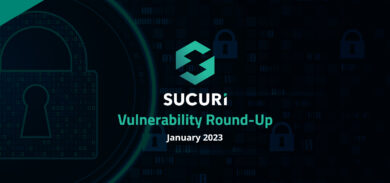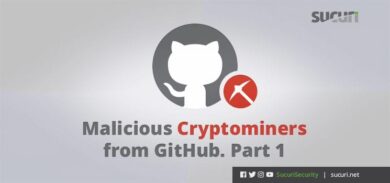The prospect of obtaining premium features without spending a dime is tempting. Nulled WordPress plugins and themes, often being advertised as the no cost versions of their premium counterparts, can seem like a dream come true for many WordPress users. Who doesn’t want to save some money while still enjoying the enhancements and extended features that premium plugins and themes provide? But the reality of using these “free” versions is much riskier than you might think.
The key message here is plain and simple: while the idea of getting something for nothing is enticing, the hidden costs and risks far outweigh the perks. Below we’ll shed some light on nulled plugins and themes to explain the importance of sticking to legitimate, licensed products.
Need a quick takeaway? Do not install nulled plugins and themes. Your website’s security, performance, and integrity are too valuable to be compromised.
Understanding nulled WordPress plugins
To fully grasp the risks associated with nulled plugins and themes, let’s first go over what they are. Nulled plugins and themes are non-licensed copies of premium WordPress software. Despite not being technically considered “pirated” under the GPL, these versions have been modified to bypass the license key registration, allowing users to install and activate them without purchasing the required license.
These “free” versions are often distributed through various channels like seemingly random websites, torrent sites, and direct email offers. They often come with the promise of providing premium features for free, which of course makes them highly attractive to budget-conscious users.
But it simply isn’t worth the risk associated. These plugins and themes can be laced with malicious code that will disrupt your website. From data breaches to full on site takeovers, the potential dangers should make the entire idea a no-go.
Why users opt for nulled WordPress plugins
One of the main reasons users will consider using nulled plugins or themes is to try to save money. Premium software gets pretty expensive, and the promise of obtaining the same functionality for free is undeniably tempting. But the notion that these plugins are “free” is a dangerous misconception and the short-term gain is often outweighed by long-term repercussions.
While it may seem like there’s no immediate cost, the hidden expenses could be substantial. Compromised security, SEO penalties, and degraded site performance are just a few of the many things that could go wrong. Moreover, the lack of updates and support guarantees you a short trip to having compatibility issues and a vulnerable website. Once installed, bad actors will use this access to distribute spam, spread malware, gain unauthorized access to websites, and carry out other malicious activities. So the seemingly innocent act of downloading a nulled plugin or theme could actually be leaving the door wide open for cybercriminals to infiltrate your site.
Unseen dangers of nulled plugins
The obfuscation technique used to hide this malicious code makes it even more dangerous. Obfuscation involves making the code difficult to read and understand, thereby concealing its true purpose. Bad actors will often obfuscate the harmful scripts they embed within the nulled plugins and themes. These scripts are capable of executing a range of malicious activities, from creating backdoors for future attacks to SEO spam and malware. So even if you have some experience with code, identifying and removing these scripts can be difficult without specialized tools.
Practical risks of using nulled WordPress plugins
The practical risks of using nulled plugins and themes extend beyond just security vulnerabilities.
Lack of updates
One of the most significant issues is the lack of regular updates and patches. Legitimate plugins and themes are routinely updated to fix bugs, patch security holes, and improve performance. Nulled plugins, however, does not receive these critical updates due to the need for a valid license key, leaving sites they’re installed on exposed to known vulnerabilities.
Poor compatibility
Since nulled plugins and themes are essentially version-locked by nature, compatibility issues are of course another significant concern. As WordPress itself is regularly updated, plugins and themes need to be updated to stay compatible. Being stuck on outdated nulled plugins will eventually lead to conflicts with other plugins, themes, or even the core WordPress files.
No support
Support and documentation are crucial aspects of managing WordPress plugins and themes. Purchasing premium plugins and themes legitimately will give you access to detailed documentation and support from the developers to help you troubleshoot. Nulled plugins and themes, on the other hand, leave you in the dark with zero support and no reliable source of documentation.
How to identify and avoid nulled plugins and themes
Identifying and avoiding nulled plugins and themes is crucial for maintaining the security and integrity of your website. The first step is to verify the legitimacy of your plugins and themes. Always download software from reputable sources, such as the official WordPress repository or trusted marketplaces like ThemeForest.
As for the plugins and themes you already have installed, the role of updates cannot be overstated. Regular updates are a hallmark of genuine software. If a plugin or theme seems to be perpetually outdated or lacks a clear update history, this is a red flag that it may be a nulled version.
Scanning for malware is another essential step. Tools like our SiteCheck scanner and Malware Database help detect harmful code that may be lurking within your plugins and themes. Regular scans will help you identify and remove malicious software before it causes significant damage.
Steps to recover from nulled WordPress plugins
So, let’s say by this point you’ve taken a look over your site and realize that one or more of the plugins or themes you’ve been using are, in fact, nulled.
Immediate actions: A swift response to threat
Upon discovering that nulled plugins or themes have infiltrated your site, the priority is to mitigate any immediate damage. The first step is to deactivate and remove the questionable plugins or themes without delay in order to prevent further malicious activity from occurring. Simultaneously, change all of the passwords associated with your website, including admin, database, FTP, and any other relevant accounts to shed unauthorized access.
Site cleanup: Eradicating the malicious code
Once the nulled plugin is removed, the next step is to conduct a thorough scan of your site for any remnants of malicious code. Use reputable malware scanning tools to identify and eliminate hidden threats. Sucuri offers an excellent malware removal service that can assist in this process. Remember, simply deleting the nulled plugin does not guarantee the removal of all malware; there may still be remnants floating around within your files or database.
Proactive security measures: Fortifying defenses
To prevent future incidents, it’s important that you up your site’s defenses. Installing a Website Firewall (WAF) provides a shield against various threats. Ensure that all software on your site is legitimate, up-to-date, and sourced from reputable providers. Lastly, regular backups should never be slept on. They are as important as ever in this context and will enable you to restore your site to a clean state should any issues arise.
For comprehensive support, consider utilizing Sucuri’s Website Security Platform which offers a suite of protective features including, monitoring, and malware removal, and DDoS protection.
Choose security over shortcuts
In the end, sticking with legitimate plugins and themes is a fundamental part of responsible website management and security should never be compromised for the sake of a shortcut. Embrace legitimate software, implement proven security measures, and maintain a proactive approach.
To further enhance your site’s security, explore our guides, from malware removal to firewall protection. If you ever find yourself in need of immediate assistance, our help page is a great resource.










